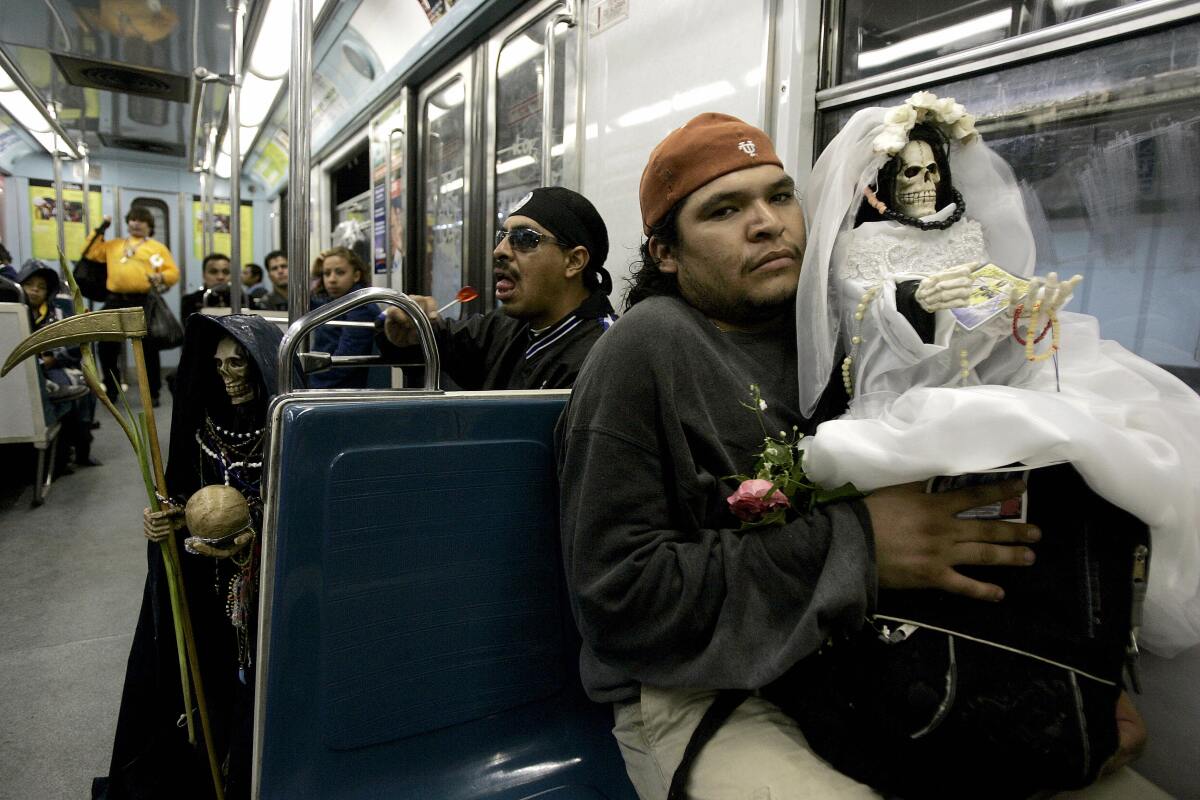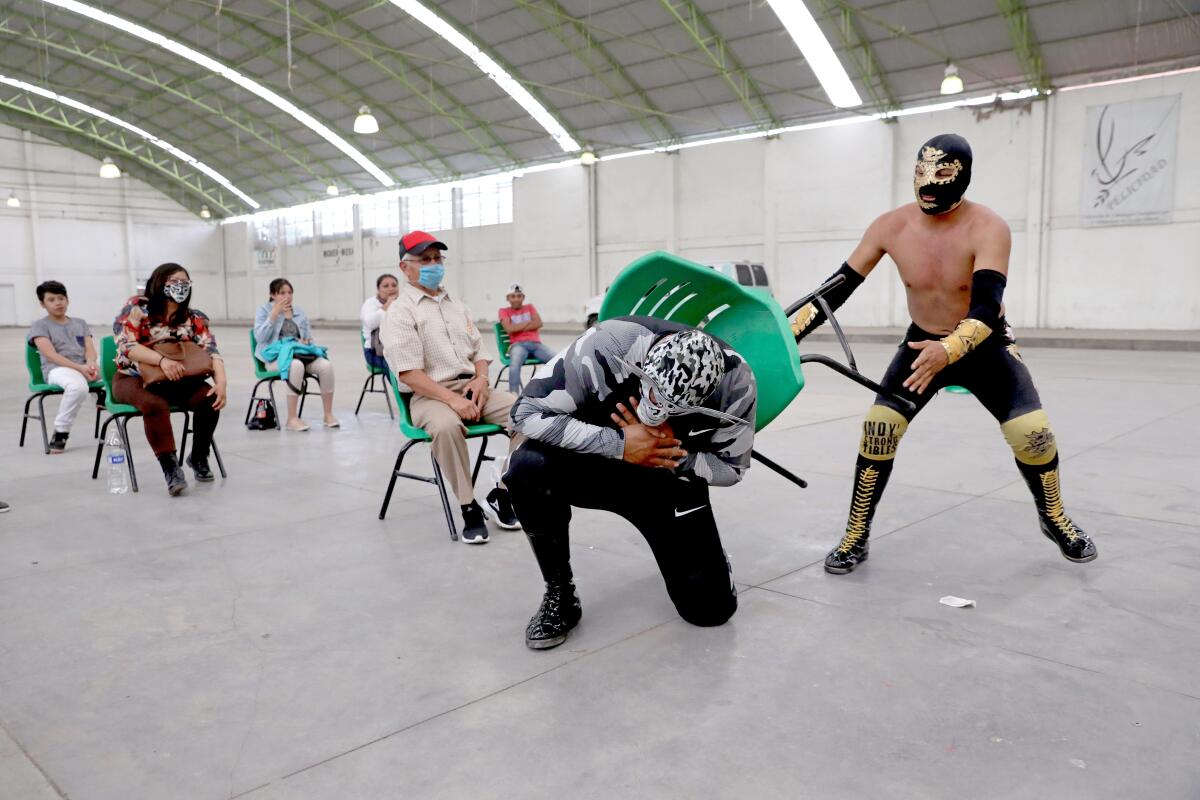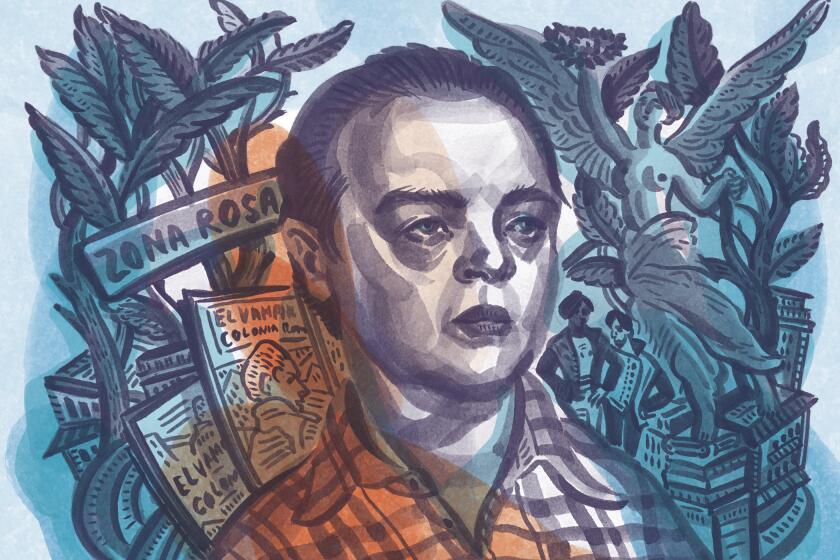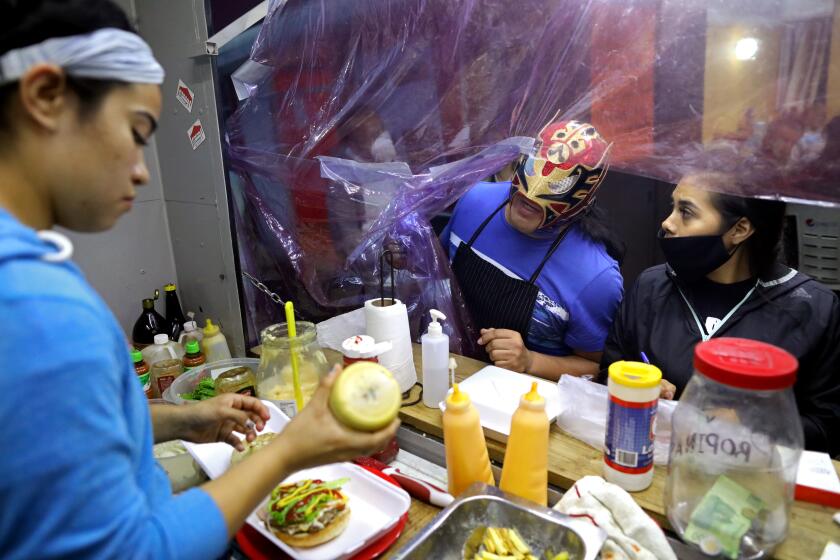Review: Mexico City through the eyes of its leading novelist flaneur

- Share via
On the Shelf
Horizontal Vertigo: A City Called Mexico
By Juan Villoro, translated by Alfred MacAdam
Pantheon: 368 pages, $30
If you buy books linked on our site, The Times may earn a commission from Bookshop.org, whose fees support independent bookstores.
In January 2016, Mexico’s capital, the Federal District, officially changed its name to Mexico City, though it had long been called that. Short of becoming the 32nd state of the nation, it is as close to a state as it can be, exercising political autonomy and ratifying its own constitution. Among the politicians and intellectuals enlisted to draft this document was one of the country’s most celebrated contemporary writers, Juan Villoro.
Born and raised in Mexico City, Villoro has been writing about his beloved home for decades. “Horizontal Vertigo: A City Called Mexico” gathers his most incisive essays, chronicles and personal memories in an attempt to tackle a singular challenge: How does one comprehend the most populous city in North America, with its rich history, complicated economy and multivalent culture? Each person who experiences it has his or her own interpretation of what the city is, and Villoro’s is as striking as the iconic urban center.
Since the title refers to a sprawling landscape that builds outward and not skyward, Villoro maintains a ground-level view of what he calls “Chilangopolis” — chilango being the slang demonym for a Mexico City resident. As a chilango, he offers firsthand insights into a bittersweet mode of life that many have come to accept, enjoy and even take pride in. He delivers that reality, however, with unabashed humor: “Our version of Popular Mechanics would have to be called Popular Apocalypse,” he writes, noting how chilangos have come to expect tragedies like earthquakes and volcanic eruptions, along with travesties like water shortages and pollution.
Though Villoro navigates such charged subjects as poverty, nationalism and corruption, his writing comes most alive when he highlights the assortment of Mexico City icons (some famous, some unheralded heroes) in his “City Characters” section. Here he profiles Paquita la del Barrio, whose brazen songs “terminate once and for all the conventions of a chaste Mexico” that shuns independent and sexually liberated women. But also worthy of praise are the street vendors and tire repairmen whose vulcanization stations “stay open more in the manner of a cave than a business,” because they’re a failing enterprise in a city where supply exceeds demand. Villoro values that surplus in human rather than economic terms. In Mexico City, “There are a lot of us, but no one feels superfluous.”
Zapata, who died this month, wrote 1979’s “The Vampire of Colonia Roma,” a turning point for LGBTQ culture at the height of Mexico’s authoritarian regime.
Keeping a sympathetic eye focused on Mexico City’s underdogs, Villoro includes a compelling portrait of Tepito, a neighborhood demonized as a haven for thieves and dealers of a variety of contraband. Villoro instead calls it “a symbol of the struggle to survive,” “a bastion of frenetic labor, except that they work in a different way there.” He casts a similar light on the street economy, the lifeblood of the city, whose purveyors advertise their products with sound — the whistle of the sweet potato cart and the distinctive cries of the tamale seller as they zigzag through residential areas.
Villoro’s compassion for the various groups that make up his community infused his work on Mexico City’s constitution. He took part in, among other issues, the matter of cultural rights — protecting the traditions and ceremonies of Indigenous and other ethnic groups — but the constitution as a whole is renowned for its attention to progressive issues involving the rights of women, the LGBTQ community, strolling vendors and informal workers.
Villoro doesn’t delve too deeply into politics, but he doesn’t miss a chance to criticize one specific leader. The government of Miguel de la Madrid, president during the 1985 earthquake, “was slow to ask for aid because it did not want Mexico to be seen as a dangerous place on the eve of the World Cup of 1986.” Like many other residents who aided in grass-roots relief efforts, Villoro has neither forgotten nor forgiven.

The specter of that natural disaster still hovers over the city, particularly when other calamities also are mismanaged. See “Diary of an Epidemic”: A chronicle of the 2009 swine flu outbreak, the essay offers another harsh (and timely) lesson in how a government’s ineptitude can jeopardize the well-being of its people when they need it most. More deaths were recorded in Mexico than in any other part of the world.
As a counterweight to the solemn pieces, Villoro includes beguiling accounts on lighter topics, such as the popularity of lucha libre wrestling. The primordial fight between good and evil is appealing because, in contrast to the complications of the real world, the good guy always wins. And no one can resist the theater of it all, complete with a villain whose “wages are outrage; his bonus booing.”
‘We thought we were eternal,’ said the lucha libre star known as Olímpico. ‘We never knew something like this could happen.’
Then there’s the widespread obsession with extraterrestrial life. Villoro speculates that the popular narrative of alien abduction for the purpose of cloning is akin to “being given another destiny.” Abduction itself “represents a personal transcendence.” And not to be missed is the annual zombie march, “quite at home in Chilangopolis.” Its philanthropic goal is to collect food for the needy; therefore it’s an invasion of emissaries — the living dead. All these fantasy narratives are metaphors for the everyday paradoxes of Mexico City, reality side by side with daydreams. A thick skin and a lively imagination are necessary to survive. However, Villoro asserts, “We [chilangos] like the city more than we like the truth.”
Alfred MacAdam’s translation is generally superb, though there is the occasional awkward word choice. The Mexican boxer Jose “Mantequilla” Nápoles, for example, is translated to “Butter Nápoles” (which sounds odd, particularly for those familiar with this internationally renowned pugilist), and “humor blanco” becomes “white humor,” which nowadays carries a markedly different implication than “lighthearted humor.” Thankfully, these instances are few and will be noticeable only to bilingual readers.

The joy of “Horizontal Vertigo” is that it offers a unique entry into Mexico City’s “inexhaustible encyclopedia” of people, places and old traditions, complementing the history books and outperforming the tour guides. Those expecting more personal stories about Villoro himself will have to find them wandering among the patriotic landmarks and the pirated music for sale on the busy sidewalks: Villoro is so closely identified with Mexico City that it’s impossible to imagine how one can be known without the other, which is why his writings consistently employ the communal “we,” as in this telling statement about the unbreakable bond between Chilangopolis and chilangos: “What was once a cityscape is now our autobiography.”
Like a lot of Californians, I’ve made dozens of trips to Mexico over the decades — beach resorts in Baja, Maya ruins in the Yucatán, colonial towns in the interior.
González is a distinguished professor of English and director of the MFA program in creative writing at Rutgers-Newark, the State University of New Jersey.
More to Read
Sign up for our Book Club newsletter
Get the latest news, events and more from the Los Angeles Times Book Club, and help us get L.A. reading and talking.
You may occasionally receive promotional content from the Los Angeles Times.










